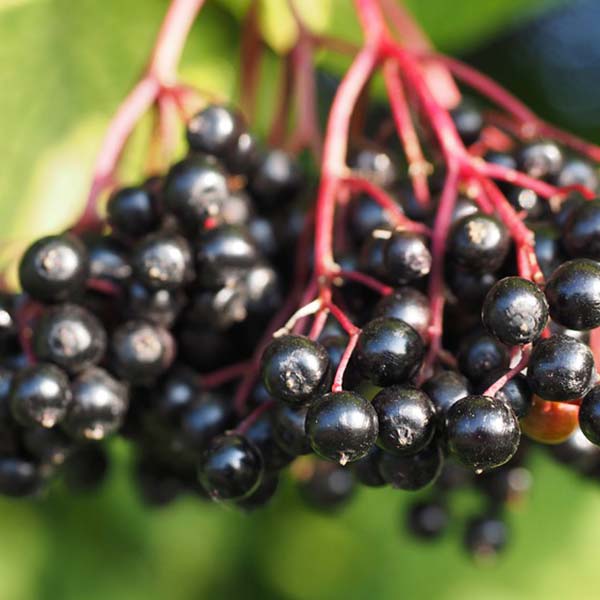Elderberry
Disease alerts help you make effective, timely decisions.
Elderberry Disease Models
ELDERBERRY RIPE ROT
The fungal pathogen Colletotrichum acutatum causes Anthracnose (Ripe Rot) on pre and post harvest fruits. The disease occurs in all production areas and has a great impact of reducing shelf life of fruits and having a poor quality of fresh fruits on the market.
Symptoms
Elderberrys are susceptible to the fungal pathogen. The berries don’t develop symptoms until they are mature or ripe. The first symptoms are seen near the end of the blossom on ripe fruits as dark, sunken areas. These infected area may shrivel with time. Within a few days bright salmon- orange coloured, wet spore masses are seen on these sunken areas. The sticky spore masses spread to other berries by rain, irrigation, splashing water, wind and contacts during harvest.
The fungal pathogen infects all stages of the plant: leaves, buds, twigs and canes. New shoots and leaves may become blighted in the spring. Twigs are becoming infected by transferring spores from infected buds. Dark brown, canker- like lesions with fruit bodies develop on young canes.
Disease cycle
The fungal pathogen overwinters in twigs and flower buds, spurs and trusses. In spring the fungus produce spores, which are dispersed by rain, irrigation and water- splashes. Infections occur at a temperature optimum of 12- 27°C and a leaf wetness period of more than 12 hours. The fruit can be infected at any time, although infections are just visible (symptoms seen) when the fruit is mature. The fungus enters the fruit and remains dormant until the berry starts to ripen. At this time the fungus starts to colonize the infected area and produce enzymes with destroy the plant cell walls. These damaged cells loose their contents and integrity (symptoms are seen as sunken areas and shrivelled). Spent fruit trusses could be infected after harvest.
In FieldClimate. com calculations for three severities of infection (a weak, moderate and severe Infection) are calculated. Whenever 100 % of infection has reached the conditions for infection have been fullfilled. Severity is also depending on the inoculum of the pathogen (history of the plantage).

